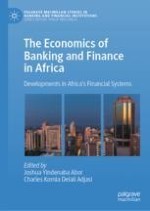This book evaluates the characteristics and developments in Africa’s financial systems, including monetary policy, structured finance, sustainable finance and banking, FinTech, RegTech, SupTech, inclusive finance, the role of regulation in dealing with banking crises, the impact of the COVID-19 pandemic on Africa’s financial systems and how to reform the post-COVID-19 financial systems. It is made up of contributions from scholars in finance and economics as well as financial market practitioners.
Banking and the financial markets play a significant role in the growth of various economies. Although a number of handbooks on banking and finance exist, they mainly focus on Europe, America and Asia. Banks and financial markets in Africa are confronted with different challenges and therefore present a unique case to understand Africa’s financial systems. A number of African countries have experienced banking crises and it is important to examine these issues as well as the regulatory regimes required to address them. This edited book contributes to the limited texts in the area by providing a comprehensive resource on banking and finance for students, scholars, researchers, policymakers, and financial market practitioners. It contains various theoretical and empirical chapters on banking and finance in Africa.
